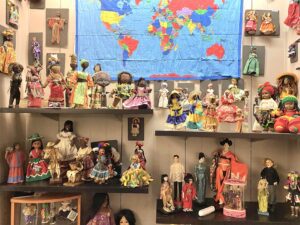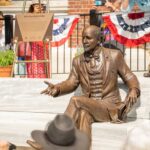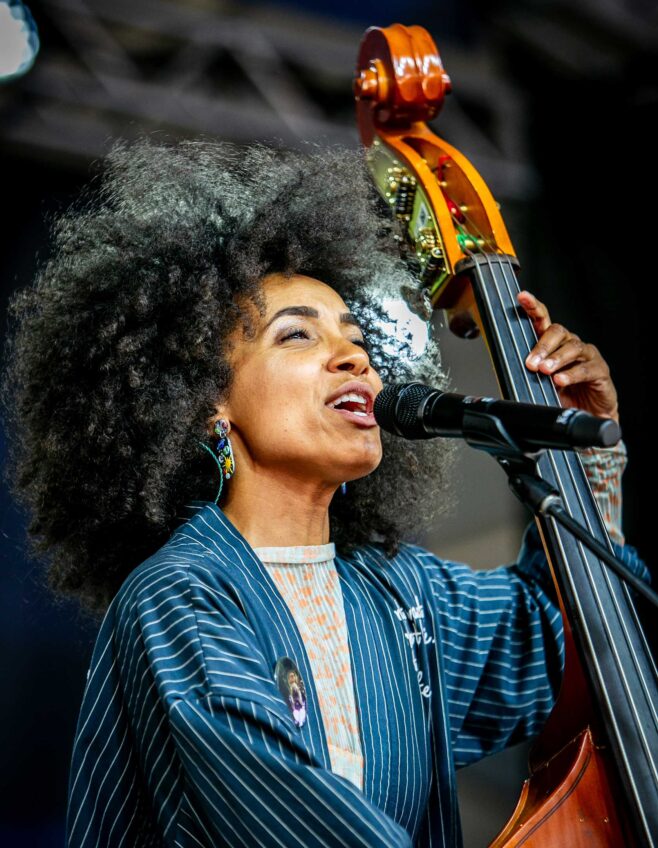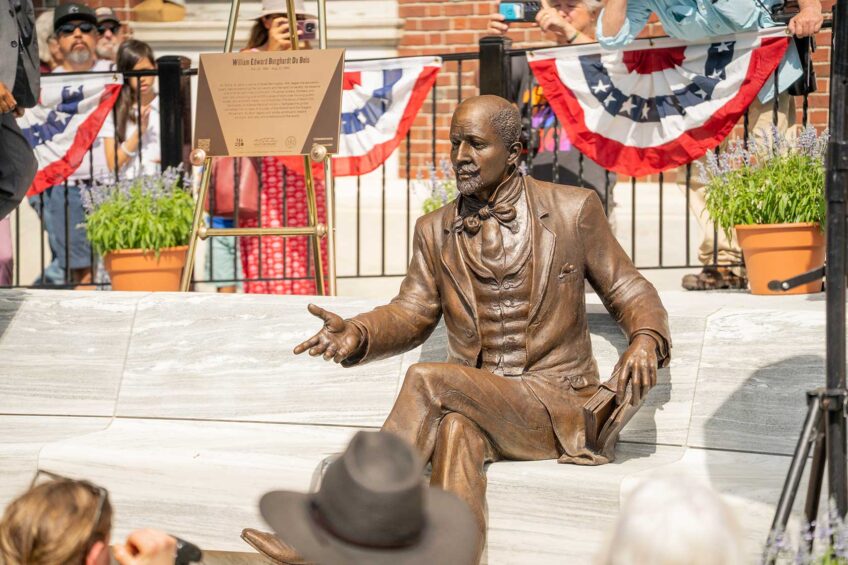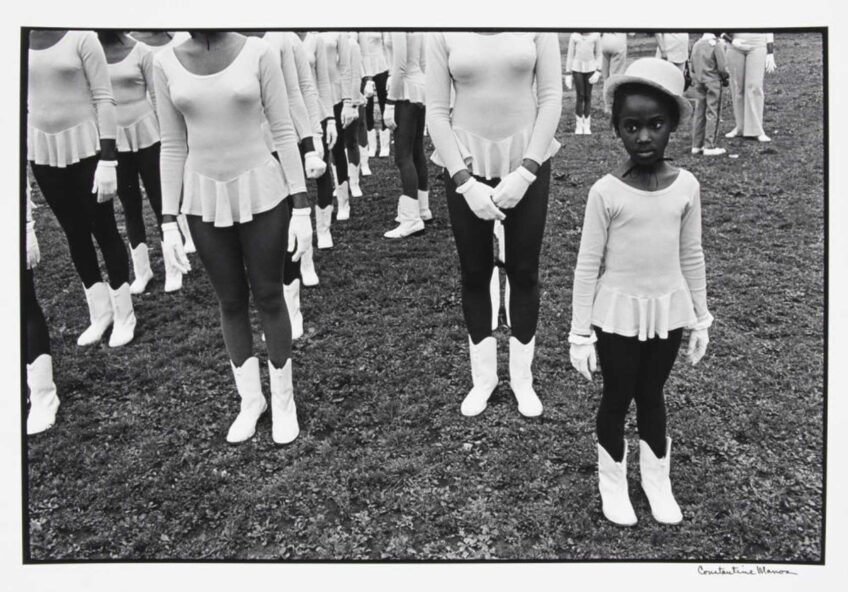At the National Black Doll Museum, a collection stuffed with history
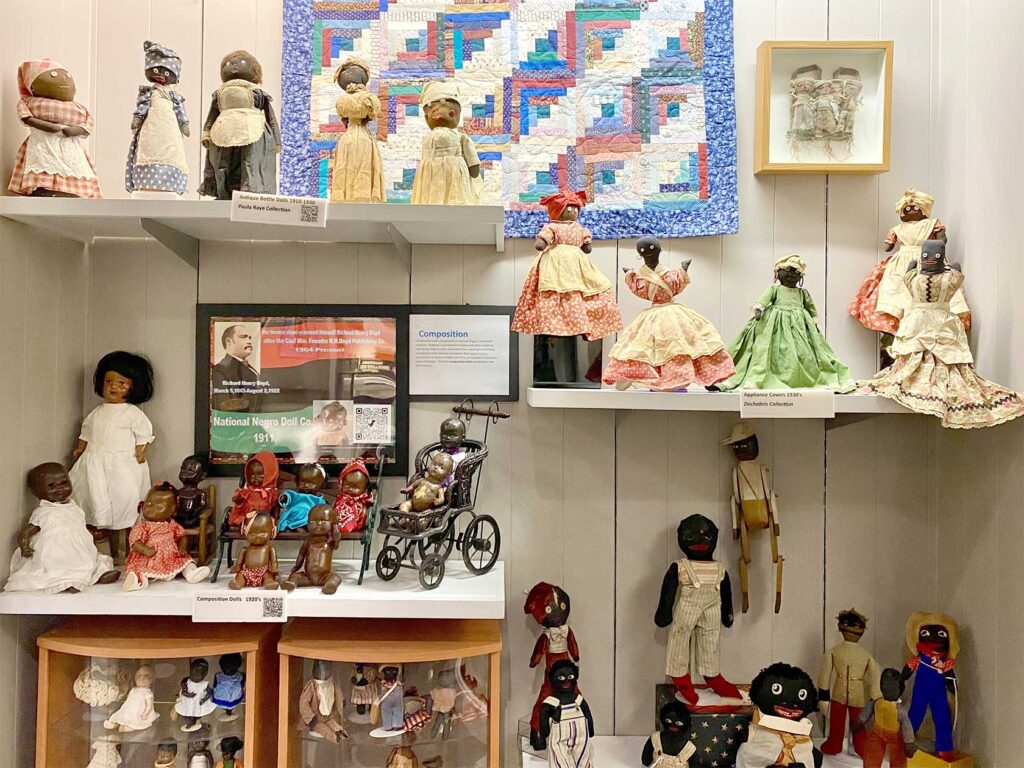
The first Black doll Debra Britt ever received was not, in fact, Black. Dolls with skin tones akin to hers were rare at the time, so her grandmother improvised, submerging a white vinyl doll in black dye to darken its pale exterior.
“My parents would not allow me to have white dolls … because they said it was not me. I would never have blonde hair. I would never have that body like that,” recalled, Britt, a doll collector, gesturing the hourglass figure typical of Barbie dolls, “because that just wasn’t a part of who we were.”
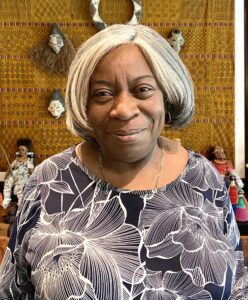
Debra Britt, executive director and co-founder, opened the National Black Doll Museum in 2012. PHOTO: Mandile Mpofu
As a young girl, driven by a desire to connect with the heritage of her African American ancestors and confront the racial stereotyping she experienced, Britt began reading books about Africa and collecting dolls that looked like her. Over the years, as she rummaged through attics she had volunteered to clean out or attended doll conventions, she slowly amassed a stockpile of Black dolls whose values now range from double-digit dollars to somewhere in the thousands.
In 2012, Britt turned her personal reserve into a public-facing showcase of Black dolls, opening the first brick-and-mortar location of the National Black Doll Museum of History & Culture in Mansfield, Massachusetts. In early April, the museum, which Britt said is the second ever of its kind in the country, reopened in a 9,000-square-foot space in Emerald Square Mall in North Attleborough, the former location of an Abercrombie & Fitch store.
What once supplied the latest clothing trends now houses dolls from bygone and contemporary eras, about 10,000 of them, Britt said. Old changing rooms have been transformed into well-lit exhibit alcoves and a large, spacious area is now an atrium displaying creations by both defunct and operational Black-owned manufacturers.
Sauntering through the retail store-turned-museum recently, Britt paused in front of each section, rattling off information about the dolls of varying brown hues resting on shelves and in display cases. She identified paper dolls from the 1880s; highly flammable celluloid dolls from the 1940s; Black pedigree dolls from 1950s England; “Alabama baby” dolls from the late 19th and early 20th centuries; dolls composed of wooden clay resin and cloth; dolls stuffed with sand, straw and cotton; palm-sized dolls and life-sized dolls; and a Bob Marley doll whose locks were fashioned from the late singer’s hair.
“I collected dolls because of history,” Britt said. She noted that many of the works, particularly those produced by individual artists such as James Baldwin’s sister Paula Whaley, were created to tell “our story.”
For her part, Britt is motivated by a commitment to representation.
“I don’t want any kid to come in here to feel like I felt as a kid,” she said, adding that she procures dolls globally for the “dolls of the world” section for this very reason — so everyone can see themselves reflected in the figurines. An entire wall, for example, is dedicated to Native American dolls, while upon another hang statuettes and traditional masks from the African continent.
“This museum is actually teaching and educating kids … We teach through the eyes of dolls,” said Tammy Mattison, who runs the museum with Britt, listening in as Britt recounted the history of topsy-turvy dolls, the double-ended creations displaying a Black and white doll on each opposing side. Although the exact origins of the dolls are unclear, Britt said they were likely first conceived during the period of enslavement because Black children were not allowed to have Black dolls.
In her hand, Britt held a fair-skinned rag doll clad in a blue and green dress. To demonstrate how the topsy-turvy works, she pulled the garment over the doll’s head, revealing a brown-skinned doll wearing a multicolor floral dress. The invention, Britt explained, allowed Black children to play with Black dolls discreetly.
She concluded her history lesson with a recitation: “Topsy-turvy upside down. One side white, the other side brown … When the master is around, the brown side is down. I pretend to cook and clean without a frown. But when we’re alone, just mommy and me, she flips me over and whispers, ‘One day we’ll be free.’”

